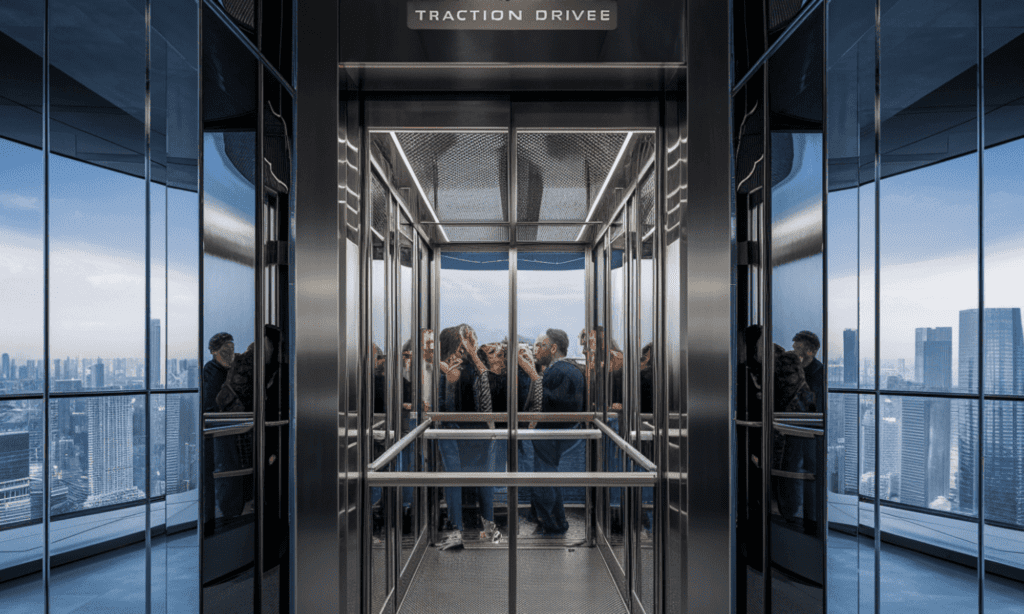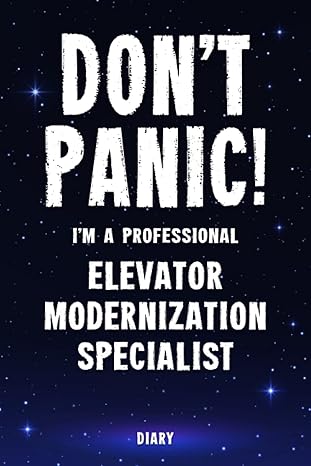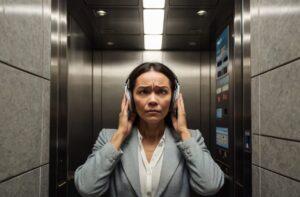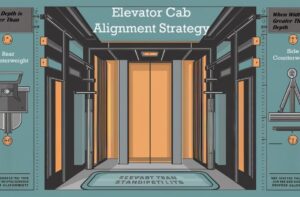Elevator Upgrades or Modernizing Elevators
Modernizing your elevator system is not just a technical upgrade; it’s a commitment to the safety, efficiency, and comfort of everyone who uses your building. This comprehensive guide will walk you through the top 10 considerations for elevator modernization, ensuring you make informed decisions that benefit both the building and its occupants.

Things you need to consider for elevator modernization:
- Cost Calculation & Budgeting:
- Budgeting is a critical aspect of any modernization project. Begin by getting a detailed estimate of the costs involved, including materials, labor, and any potential disruptions to building operations Think about reserving a contingency fund to handle unforeseen costs. Research financing options, as some upgrades might qualify for grants or incentives aimed at improving building efficiency. Clear budgeting not only prevents financial strain but also ensures that you can complete the project without compromising on quality or safety. Communicating transparently with stakeholders about costs and benefits helps secure the necessary support and resources.
- Costs for elevator modernization vary greatly depending on the scope of the work.
- For instance, a simple car re-line on a small lift may cost as little as four to five thousand USD, while extensive modernization on a group of lifts could amount to hundreds of thousands of pounds.
- Factors influencing costs include the size, speed, and technical requirements of the lift.
- Identifying Safety Concerns
Safety is paramount when it comes to elevators. Begin by conducting a thorough safety assessment of your current elevator system. Look for outdated components, malfunctioning safety mechanisms, and any history of accidents or near-misses. Common issues might include worn-out brakes, malfunctioning doors, or outdated control systems. Modern safety features, such as improved braking systems, door sensors, and emergency communication systems, can drastically enhance the safety of your elevators. Addressing these concerns not only protects the wellbeing of users but also reduces liability risks for building owners. - Establishing Modernization Goals
Before embarking on an elevator modernization project, it’s crucial to establish clear goals. What do you hope to achieve with this upgrade? Common objectives include improving energy efficiency, enhancing safety, increasing reliability, and boosting the overall user experience. Defining your goals will help guide your decisions throughout the modernization process. It will also make it easier to communicate your vision to contractors and stakeholders. Whether you aim to reduce energy consumption by 20% or eliminate specific safety risks, having concrete goals ensures your project stays on track and delivers the desired outcomes. - Selecting a suitable contractor:
- The elevator industry offers a range of contractors, from large multinational corporations to smaller, independent companies.
- Ensure the chosen contractor is a member of the Lift and Escalator Industry Association.
- Conduct basic due diligence, including understanding their resources, reviewing past projects, obtaining references, and establishing a contract.
- Choosing the right contractor is vital for the success of your elevator modernization project. Look for contractors with extensive experience in elevator upgrades and a proven track record of successful projects. Check references and reviews to ensure they have a history of reliability and quality work. A qualified contractor will guide you through the entire process, from initial assessment to final installation, ensuring that all work meets the highest standards of safety and efficiency. Collaborating with a trusted professional minimizes risks and maximizes the benefits of your modernization project.
- Estimating Duration:
- Elevator modernization can disrupt daily operations in your building. To minimize inconvenience, plan the project during off-peak times or in phases. Communicate clearly with tenants and users about the schedule and expected disruptions. Implement temporary solutions, such as additional signage or alternative access routes, to help users navigate during the modernization process. Effective planning and communication are key to ensuring that the project proceeds smoothly and with minimal impact on the building’s occupants. By prioritizing user convenience, you maintain a positive relationship with tenants and users throughout the project.
- Minor refurbishments may take only a few days, while larger projects could span several weeks.
- Discuss timelines with the contractor and obtain a detailed program outlining the work and associated timeframes.
- Compliance with Standard:
- Make sure the modernization work complies with all local and national codes and regulations, including the Americans with Disabilities Act (ADA)
- Common standards include BS EN81 Part 80 and Part 82, as well as BS 5655 Part 11 and Part 12.
- Exploring Alternatives:
- Consider lift modernization as an alternative to refurbishment, involving equipment replacement.
- In cases where extensive refurbishment is required, lift replacement may be a more cost-effective option.
- Accessibility Improvements
Making elevators more accessible is a key consideration in modernization projects. This includes installing features such as braille buttons, audible floor indicators, and wider doors to accommodate wheelchairs. Accessibility improvements ensure that all users, regardless of physical abilities, can use the elevators safely and comfortably. These enhancements not only comply with legal requirements but also demonstrate a commitment to inclusivity. By improving accessibility, you enhance the overall user experience and make your building more welcoming to everyone. - Advanced Safety Features
Incorporating advanced safety features is crucial for protecting elevator users. Modern systems offer a range of safety enhancements, such as advanced braking systems, door sensors, and emergency communication tools. These features can detect and prevent potential accidents, ensuring a safer ride for all passengers. Upgraded control systems can monitor elevator performance in real-time, allowing for immediate response to any issues. By integrating these advanced safety features, you not only comply with current safety standards but also provide peace of mind to all users, reinforcing trust in your building’s infrastructure. - Post-Modernization Maintenance
Ongoing maintenance is essential to preserving the benefits of your elevator modernization. Establish a regular maintenance schedule to ensure that all systems continue to operate efficiently and safely Frequent inspections and prompt repairs help stop minor issues from escalating into major problems.. Consider enrolling in a maintenance program with your elevator contractor, which can provide expert care and quick response times. Consistent maintenance not only extends the lifespan of your elevators but also ensures that they continue to provide safe and efficient service for years to come.
Full Year Undated Weekly Elevator Modernization Specialist Diary – Start At Any Time Of Year – Add Your Own Dates
Particularly, the following key factors need to be remembered during modernization:.
- Safety: During modernization, prioritize safety by installing safety features such as warning lights and alarms.
- Accessibility: Ensure all users, including those with disabilities, can use the elevator.
- Energy Efficiency: Upgrade the elevator system to be more energy efficient, which can help reduce operating costs.
- Maintenance and Support: Plan ongoing maintenance and support for the modernized elevator system, including regular inspections and testing.
- Seek Expert Assistance: Engage the services of a seasoned elevator service provider proficient in elevator modernization. Their expertise will navigate you through the process and guarantee precise execution of the work.
Conclusion
Elevator modernization is a significant investment that can dramatically improve the efficiency, safety, and user experience of your building. By considering these top 10 factors, you can make informed decisions that benefit both your property and its occupants. From assessing current performance to planning for ongoing maintenance, each step is crucial to achieving a successful modernization project. Embrace the opportunity to upgrade your elevators, and enjoy the enhanced functionality, safety, and satisfaction that comes with it.
Imporatance Of Elevator Modernization. Read Seperately.
To learn step-by-step about your elevator modernization and its benefits, read other articles here.





